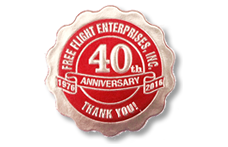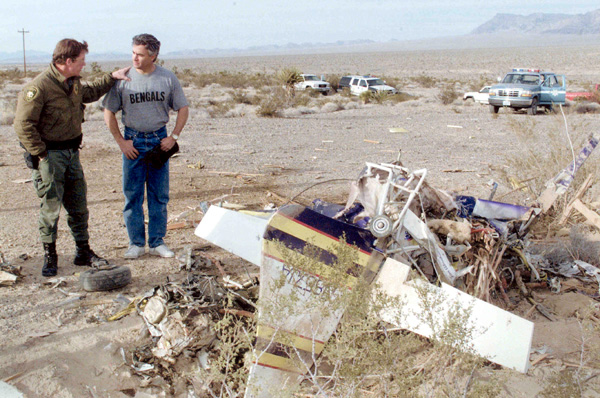
Emergency Bailout

It was a beautiful Sunday afternoon, with light winds and clear skies, and I had an itch to fly. My family was to meet me at the airport for a flight to Death Valley for lunch. But rather than wait, I decided to take my aerobatic aircraft up for a practice session. I had received the knowns for 1999 and I wanted to get to the practice area and try them out.
As I pushed my aircraft out of the hangar, I mentally rehearsed my egress procedures, just as I do before every aerobatic flight. Finishing the preflight check, I climbed in and waved to family members as I taxied out. As I performed my snap roll exercises, I thought that everything was going great. Just one more outside snap roll and I would be satisfied. I pushed hard left rudder, but for some reason, I didn’t punch the stick forward. The rudder pedal suddenly gave way, my heart dropped, and I thought "Oh my God, not me!"
Unexpectedly, the aircraft stayed perfectly straight and level. I checked for the cable with my left hand, hoping to hand-control it. Meanwhile, I started talking out loud to myself, muttering "This is for real! How can that be? This only happens to people you read about in aerobatics magazines!" For some reason, the aircraft stayed straight and level for over 30 seconds. I evaluated all of the available options, but I didn’t touch the controls. I called the tower and quickly gave my situation and location.
Suddenly, the aircraft broke hard right and dove straight down! Without any time to waste, I went into automatic survival mode. Not feeling the weight, I pulled back the canopy; I released my harness, unplugged my helmet, and dove out to the left. The next thing I remember, I found myself in freefall, in a stable arch position, screaming toward the Earth. I could see the aircraft out of the corner of my eye, so I knew that I was clear. I pulled the ripcord and prayed; the immediate opening shock was a relief!
I began talking out loud once again, "It’s not over yet; stay focused!" I could see the dust from the wreckage of the aircraft, so I knew the direction of the ground winds. I saw cactus everywhere and Yucca trees with giant spines, so I steered for a clearing and talked myself through my landing technique: "feet together, knees bent, hit & roll." I quickly got up and seemed to have no injuries at all. Wow, what an experience! I hiked over to the wreckage and spread out my ‘chute; almost immediately, a Cessna circled overhead. Then a police helicopter lifted me to the waiting paramedics, and they agreed that I was uninjured after my ordeal.
There are several specific events that helped to save my life.
- First, just two days before the accident, my father pointed out that my canopy release knob had frozen up. We fixed it right there; I’m glad I didn’t just put off that repair.
- Also, just one month before, I had Allen Silver give a safety seminar to our local IAC chapter. Al ran us through every possible safety procedure, and he also repacked my emergency ’chute.
- Plus, a few years before I had completed a sport parachuting training course.
- Finally, the fact that the aircraft stayed straight and level allowed me to evaluate my options and prepare to take effective action.
The report from the other pilot, confirmed by the audiotapes from the tower, estimated that I was under the open ’chute for only about 20-30 seconds (350-550’ AGL). Gary Douris from Free Flight calculated that if I had waited only another 3 seconds, I would have "owed some altitude." I had no more time to evaluate the situation; I made my exit just in time. Most pilots have never had this experience, so they have to learn how to survive. Rehearse your egress procedures. Stay in touch with your parachute rigger. Invite a safety expert to your chapter to run you through your safety procedures.
Never say that it can’t happen to you. Many thanks to Allen Silver of Silver Parachute Sales who packed my beautiful parachute and the folks from Para-Phernalia, Inc. and Free Flight Enterprises, Inc. who manufactured my Softie container and Preserve canopy.
Jim Abraham
January 17, 1999
